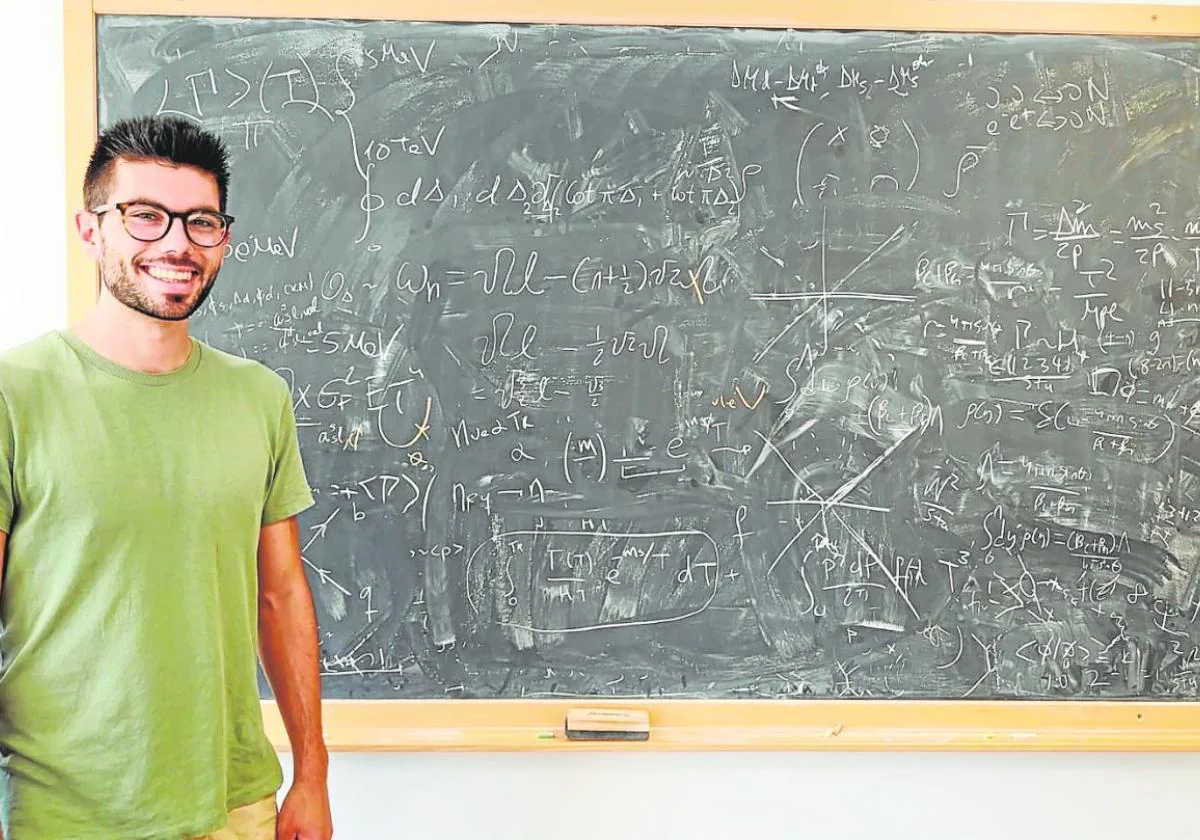All children dream of becoming a doctor, an astronaut or a rock star. Unfortunately, many of them leave their dreams behind along the way and never achieve them. This is not the case for Miguel Escudero, a physicist from Oriolan who has worked for years to realize his dream: to be part of the European Organization for Nuclear Research (CERN). Just a year ago, the 31-year-old managed to join the staff of the world’s largest physics laboratory, which is located in Geneva, Switzerland.
What does it look like working from the inside at CERN?
Around 5,000 people work at CERN and it really is an example of global collaboration. It’s an impressive site, home to the most powerful particle accelerator on the planet, the Large Hadron Collider (LHC). In my department, we are 70 theoretical physicists, including 5 Spaniards. My colleagues and buddies are the best in the world at what they do. When someone asks a question there is always someone who knows the answer. So, just eating with them is really an amazing experience.
to learn
“It is a very stimulating environment, every day there are seminars and seminars from the best experts.”
In addition, it is a very stimulating environment. Here every day I have a seminar or colloquium given by the world’s leading experts in this field. I learned a lot in a year and had a lot of fun.
Was the path to joining CERN difficult?
I have always been very clear about my desire to be a part of this organization. I studied physics and completed my doctoral thesis on dark matter at the Institute of Particle Physics in Valencia. I have specialized in particle physics applied to the early universe to understand what might have been going on in the universe a second before it existed. This research continued during her postdocs at King’s College London and the Technical University of Munich, where she began studying neutrino cosmology. One day, I saw a job offer from Cern, and after months of waiting, I was able to join there as a researcher on a three-year contract.
What is the importance of neutrinos in the universe?
Neutrinos are neutral and very light fundamental particles. They weigh at least a million times less than an electron, and the main thing about them is that, just after the Big Bang, they were produced in huge quantities, accounting for 40% of the energy in the entire universe. Today, in every cubic centimeter anywhere in the world there are 300 neutrinos from the Big Bang. And these have a very important effect on how the universe has evolved since it was one second old. Neutrinos were theorized in the 1930s and are, in fact, produced in large quantities in nuclear power plants, in the atmosphere, and on the sun.
What is the difference between those first neutrinos and those in the universe today?
The main difference is energy. What the universe has done since it was one second old until today is expanding. We know that in the beginning it was a million times smaller, and therefore a million times hotter. So what has changed dramatically with these neutrinos is their energy and density. I mean, it’s already been thinned out a lot, but despite that, neutrinos are still a huge component of the density of the universe. This is the most impressive. For now, it has a secondary role, because the expansion of the universe is dominated by dark energy, dark matter, and ordinary matter.
Your current research focuses on these components of the universe, right?
Yes, I am currently trying to understand why the universe consists of matter and not matter and antimatter. This is an unsolved problem in fundamental physics, and I am working to relate it to the decay of a type of particle called a B meson. The advantage of these particles is the fact that they can, of course, have decays that sometimes end in more decay. of matter from antimatter. This may allow us to understand why the universe we observe is made of only matter. Moreover, this could also explain the nature of the mysterious dark matter, which could be a type of antimatter.
Progressing
“We are studying whether the decay of B mesons is related to the absence of antimatter.”
At what stage did this investigation reach?
– We have already worked out the mechanism of how this happens in the primordial universe. We now better understand the signals predicted by the mechanism in experiments such as the LHC. For now, it is necessary to wait about ten more years for the experiments to have enough data to be able to say with complete certainty whether or not this could happen.
After realizing any particle physicist’s dream, what is your next goal?
Well, this is pretty hard to beat, I admit. I feel proud to have been here for a few years and will try to extend my stay for another year. After that, I’d like to settle down somewhere, because since I started my PhD thesis I’ve been traveling for nine years. I am currently considering looking for permanent teaching or research positions in Europe in general and in Spain in particular.
Is there a future for a physicist like you in our country?
-I think so. Science in Spain is excellent, but there is still some instability. There are many resources for doing high-quality research, and I think that after the pandemic it has become clear that science is an essential tool for progress as a society. If we are clear about that, Spain certainly has a very promising future and I would certainly like to be a part of it.





